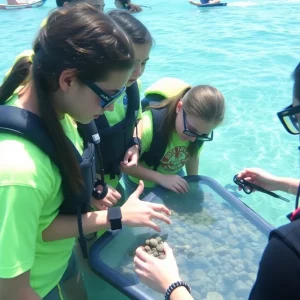Charleston Moves to Replace Lead Pipes in Water System
In a significant effort to ensure safe drinking water, Charleston is taking its first steps towards eliminating all lead pipes from its water system. This initiative comes as part of the new rules issued by the Biden Administration through the Environmental Protection Agency (EPA), aimed at replacing lead service lines across the country within a ten-year timeframe.
A Tough Task Ahead
The Charleston Water System is gearing up for a major undertaking. With over 150,000 service lines in the system, approximately 130,000 of those are currently in use by local customers. But here’s the kicker: just under 5% of these lines have been confirmed to be made of lead, leading to many service lines still falling into the “unknown” category due to age and unreliable records.
Mike Saia, the Public Information Administrator for the Charleston Water System, clarified that this uncertainty means that the next few years will involve a great deal of digging—“We’ll be investigating around 63,000 different service lines by digging small holes next to water meters,” he explained. This careful digging allows them to visually inspect those pipes and keep accurate records.
Keeping Residents Informed
One of the exciting aspects of this project is how the Charleston Water System will keep its customers in the loop. The new EPA rules require systems to inform customers if their service lines are known or suspected to contain lead. To comply with this, Charleston has begun sending out letters and has even launched an interactive database on their website! This tool allows residents to check the status of service lines, showing the majority currently as only being “suspected” to contain lead.
Saia reassured residents that the drinking water remains safe. “Thanks to chemical treatments we’ve been using for nearly thirty years, we prevent lead leaching from the pipes into the drinking water,” he stated. Moreover, they maintain proper pH levels and conduct extensive testing, ensuring lead levels in the water are consistently below safety concern levels established by the EPA.
Funding the Replacement
So, what’s next for the lead service line replacement? It’s a hefty price tag of $125 million to replace these service lines. Fortunately, help is on the way! State and federal grants are expected to lessen the financial burden on the water system. “We’re thrilled to have started with a $32.4 million grant, half of which will be forgiven. This will allow us to replace the first 1,100 service lines in our most economically disadvantaged areas without burdening our ratepayers,” Saia noted.
In a big change from how things normally work, the grant-funded replacement requires that they replace the service lines all the way to the structures, rather than just up to the water meter. This means a comprehensive solution to the issue!
Looking Ahead
For the Charleston Water System, this project is a mix of painstaking detective work and modernization. With expectations for work to begin on those initial 1,100 service lines in the first quarter of next year, the community can look forward to cleaner, safer drinking water in the years ahead.
This is just the beginning of a journey that will ensure Charleston continues to provide its residents with the safe and reliable water they deserve. So, stay tuned, Charleston—exciting changes are on the horizon!



























